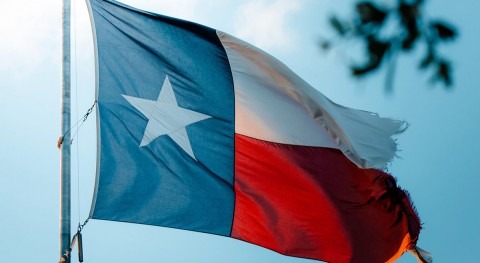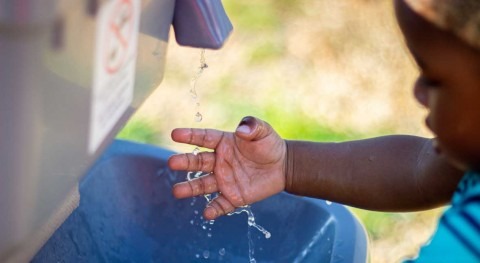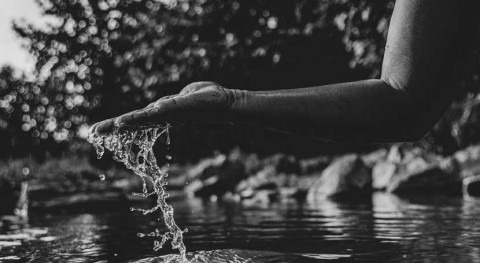This week a new article in India Today analyses water issues in India focusing on drinking water, and examining local problems, such as drinking water waste due to the use of water purifiers attached to taps in homes, and inefficient use by the bottled water and soft drink industries, as well as global solutions, such as rainfall harvest, water reuse and water efficiency.
The monsoon season finally arrived and will provide some relief to water availability problems in many parts of India. While on one hand the heavy rains cause major flooding problems in places like Mumbai, even the monsoon may not be of much help to improve the drinking water situation in the country. The water crisis in India needs multi-faceted management actions to improve water security.
Overall, India suffers water stress. But what do we mean by this? Different measures of water stress are frequently used. The Falkenmark1 indicator or ‘water stress index’, widely used, defines water stress as water availability below 1,700 m3 per person per year, while scarcity is defined as below 1,000 m3. In India, while water availability was 5,177 m3 per capita in 1951, it declined to 1,545 m3 by 2011 according to Census figures. It is pretty striking even though this indicator does not take into account aspects like regional differences, accessibility or man-made sources of water such as desalination. Using instead the ratio of water withdrawal to the amount available as an indicator, it still shows most of India experiences high water stress, defined as a ratio above 40%. A country’s baseline water stress expressed as this ratio, along with other water risk measures, can be easily looked up in the online tool of the World Resources Institute that maps water risk worldwide.
What is happening with India’s drinking water then?
The main source of drinking water in the country is groundwater. India is the country that extracts most groundwater in the world, more so than the second and third largest extractors (China and the United States) together. However, only 8% of the extracted groundwater in India is used for drinking. A whopping 80% goes to irrigation, and the remaining 12% goes to industrial uses. Groundwater over-exploitation is a major problem nationwide: according to the Economic Survey 2015-2016 the water table has declined at an estimated rate of 0.3 metres per year. For the most part, groundwater in India is of drinking water quality. It is obvious that increasing efficiency and using reclaimed water for agricultural and industrial uses would decrease the pressures on groundwater and save it for uses that require high quality, namely drinking. Currently most domestic waste water is discharged untreated and therefore cannot be recycled.
Concerning alternate sources of drinking water, the Indian government has identified rainwater as an underused source of freshwater. The country uses, indirectly, only one fourth of the total rainfall of about 4,000 billion m3, through withdrawals from surface waters and groundwater that gets replenished with rainfall.
Drinking water: growing the right business?
Water purifiers are a fast growing business in India. Water of supposedly drinking water quality, either groundwater or water supplied though municipal pipes is passed through RO-based water purifiers which recover only 26% of the water. India’s National Green Tribunal has looked into this and directed the responsible authorities to prohibit the use of drinking water using these systems in areas where total dissolved solids do not exceed the threshold of 500 milligrams/litre, and to establish regulations to ensure the efficiency of such systems is at least 60% and up to 75% in the future.
The bottled water and soft drink industries is another area where drinking water is used inefficiently. The booming business of packaged drinking water is growing over 15% per year. More than 6,000 licensed bottling business (plus others not registered) extract each an average of 5,000 to 20,000 litres of groundwater per hour, while only 65% of it ends up packaged as drinking water. While the consumption of bottled water is linked to the level of prosperity in the different regions, a major problem is that bottling plants concentrate in southern states where water scarcity is more severe. The soft drink industry has also been blamed for excessive groundwater use. In 2017, as a water crisis hit Kerala and industries were ordered to reduce water use by 75%, activists and politicians’ protests targeted water use by the PepsiCo plant in Kerala’s Kanjikode. In 2016, Coca-Cola and PepsiCo were ordered by the court to stop diverting water from the Tamirabani river in Tamil Nadu, over concerns of groundwater depletion and scarcity of river water.
What is being done?
India’s central and state governments are focusing now on water conservation. A conservation fee for groundwater use has been proposed by the Central Ground Water Authority, to be implemented as of this past June, but state governments, responsible for implementation, are hesitant about discontent over the measure.
Earlier this week, Minister Gajendra Singh Shekhawat, in charge of the umbrella ministry dealing with water issues in India, launched a new initiative: Jal Shakti Abhiyan for water security. It will focus on water conservation and rainwater harvesting, restoration of traditional and other water bodies, water reuse and groundwater recharge, watershed development, and afforestation. The comprehensive plan also contemplates efficient water use in irrigation and better choice of crops, as agricultural water uses are key to ensure water security in the country. Actions will focus on water stressed areas where groundwater has been overexploited.
- Falkenmark, M., J. Lundquist and C. Widstrand (1989), “Macro-scale Water Scarcity Requires Micro-scale Approaches: Aspects of Vulnerability in Semi-arid Development”, Natural Resources Forum, Vol. 13, No. 4, pp. 258-267.








